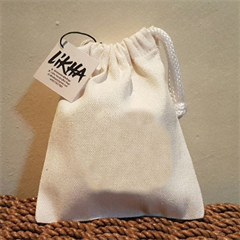The evolution of pouch design has been driven by a combination of consumer demands, technological advancements, and sustainability concerns. Over the years, pouches have transformed in terms of materials, shapes, features, and printing techniques. Here’s a brief overview of the evolution of pouch design:
- Early Pouches: The concept of pouch packaging dates back to ancient times when people used animal skins or other natural materials to create rudimentary pouches for carrying and storing food, water, and other essentials.
- Introduction of Flexible Packaging: The modern era of pouch design began with the development of flexible packaging materials in the mid-20th century. Early pouches were typically made from paper and aluminum foil laminates.
- Advancements in Materials: As technology progressed, pouch materials evolved. Manufacturers started using various types of plastics, such as polyethylene and polyester, to create more durable and versatile pouches.
- Stand-Up Pouches: One significant innovation was the introduction of stand-up pouches. These pouches feature a gusseted bottom that allows them to stand upright on store shelves, providing better visibility and space utilization. They became popular for products like snacks, pet food, and liquids.
- Spouted Pouches: Spouted pouches emerged as a convenient packaging solution for liquids, baby food, and other pourable products. They feature a built-in spout and resealable cap for easy dispensing and storage.
- Zipper Closures: Many pouches now come equipped with zipper closures or sliders, allowing consumers to reseal the pouch after opening. This feature helps maintain product freshness and extends shelf life.
- Clear Windows: Some pouches incorporate clear windows or panels to give consumers a view of the product inside. This is especially popular for products where visual appeal is essential, such as snacks and cosmetics.
- Single-Use and Portion-Controlled Pouches: The rise in consumer demand for single-serve and portion-controlled products has led to the development of smaller pouches that contain precise amounts of items like coffee, condiments, and sauces.
- Sustainability Focus: With increasing awareness of environmental issues, there’s a growing emphasis on sustainable pouch design. Manufacturers are exploring options like recyclable materials, biodegradable films, and reduced material usage to minimize the ecological footprint of pouches.
- Customization and Branding: Pouches are highly customizable, with advanced printing techniques allowing for vibrant graphics, detailed product information, and branding elements directly on the pouch’s surface. This has become a crucial aspect of marketing and product differentiation.
- Microwaveable Pouches: Innovative designs have led to the creation of microwaveable pouches for convenient cooking and heating of packaged food items.
- Barrier Properties: Pouches have improved their barrier properties to protect products from oxygen, moisture, light, and odor. This is particularly important for products that require extended shelf life.
- Smart Packaging: Some modern pouches incorporate technology like QR codes for product information, track-and-trace systems for supply chain transparency, and even interactive features for consumer engagement.
The evolution of pouch design continues to be shaped by consumer preferences, technological innovations, and sustainability goals. Pouches have become a versatile and eco-friendly packaging option that meets the changing demands of both consumers and manufacturers across various industries.




















